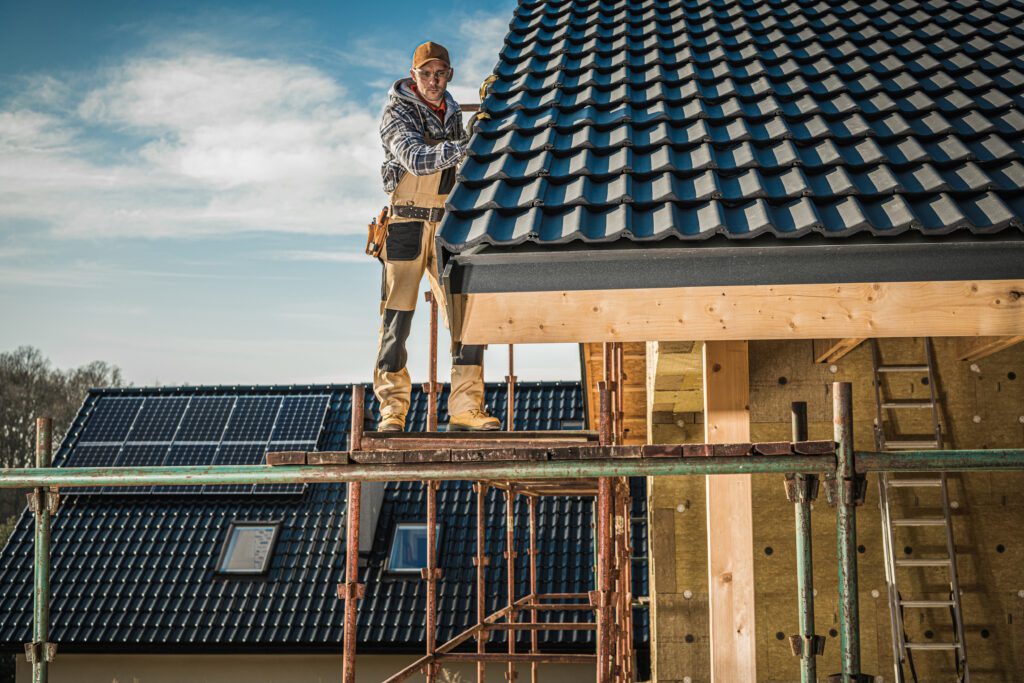Conducting regular roof inspections is essential for the health of your home, but many homeowners take the DIY route, believing they can spot potential issues on their own. While basic inspections like checking for visible damage are helpful, there are many underlying problems that a DIY approach simply won’t reveal. In this article, we’ll explore five critical things a DIY roof inspection is likely to miss, and why professional expertise is necessary to ensure your roof’s longevity.
1. Hidden Moisture and Leaks
One of the biggest risks to your roof is moisture buildup, which can lead to leaks and structural damage over time. DIY inspections often focus on visible signs like missing shingles or clogged gutters, but moisture issues are usually hidden beneath the surface. Without specialized tools like infrared cameras or moisture meters, it’s nearly impossible to detect water infiltration in the roof deck, attic, or insulation.
Moisture can cause mold growth, wood rot, and weakening of your roof’s structure—all of which can lead to costly repairs if not caught early. A professional inspection will include tools and techniques that go beyond surface-level checks to detect any hidden water damage.
2. Structural Integrity Issues
The structural integrity of your roof is one of the most critical elements that ensures it can withstand the elements. Sagging areas, dips, or weakened support beams may not be visible to the untrained eye. However, these issues are often early warning signs of significant problems that could lead to a roof collapse if not addressed promptly.
Professionals assess your roof’s overall structure, including checking for underlying problems with the roof deck, trusses, and support beams. DIY inspections rarely cover these deeper, structural concerns, leaving your home vulnerable to undetected damage.
Read more: What Happens In A Roof Inspection
3. Flashing Failures and Sealant Deterioration
Flashing, the material used around roof penetrations like chimneys, vents, and skylights, plays a vital role in preventing leaks. Unfortunately, DIY inspections often overlook the condition of flashing and the sealants used around these vulnerable areas. Over time, flashing can corrode, warp, or loosen, and sealant can crack or deteriorate, leading to water infiltration.
A professional roofer will thoroughly inspect all flashing and sealant points to ensure they’re properly intact and haven’t suffered wear and tear. Ignoring these components can lead to leaks, mold, and long-term roof damage that DIY inspections can easily miss.
4. Proper Ventilation Problems
Proper roof ventilation is crucial to maintaining a healthy home and roof. It allows warm air to escape during the winter and prevents excessive heat buildup in the summer. Without proper ventilation, you may experience problems like ice dams, warped shingles, or increased energy costs due to poor insulation.
DIY inspections often overlook ventilation issues because the signs aren’t always obvious. A professional will assess the ventilation system, ensuring your roof and attic have the necessary airflow to prevent heat and moisture buildup, both of which can severely damage your roof.

5. Subtle Shingle Damage
While missing or cracked shingles are easy to spot during a DIY inspection, more subtle forms of damage often go unnoticed. Shingles can suffer from granule loss, blistering, or curling, which may not be immediately visible but can weaken your roof’s protection against the elements. Over time, this can lead to leaks and premature aging of your roof.
Professionals know how to identify these less obvious signs of damage, ensuring your shingles are in good condition and capable of protecting your home for years to come. Without this expert eye, your roof may be more vulnerable than you realize.
Read more: Benefits of a FREE Professional Roof Inspection
Why Professional Roof Inspections Are Essential
While DIY inspections are a good way to keep an eye on your roof’s general condition, they don’t offer the in-depth assessment that a professional inspection provides. Roofing professionals have the experience, tools, and training needed to detect hidden issues before they turn into costly repairs.
For a thorough inspection, we recommend scheduling a professional roof inspection to ensure that all areas, including those that are hard to reach or detect, are checked properly. This not only extends the life of your roof but also helps avoid emergency repairs down the road.
